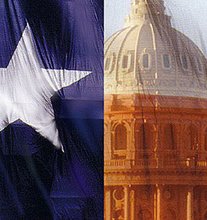
Celebration marks Juneteenth
June 14, 2008 - 6:32PM
Sean Gaffney
EDINBURG -- Faded white crosses mark weathered gravestones in what is believed to be the Rio Grande Valley's only black cemetery.
A white wooden fence surrounds the scattered burial plots here at this rather unknown, dusty place of repose, which for many years was neglected and covered with thick brush.
Today, this mostly forgotten final resting place is finally receiving the attention and veneration deserving of such hallowed ground.
The Hidalgo County Historical Commission on Saturday unveiled an official Texas historical marker at Restlawn Cemetery during the annual Juneteenth celebration marking the end of slavery in Texas.
"Today is a historical moment because people came together and worked very hard to get this historical marker," said Beverly Ashley-Fridie, a professor at the University of Texas-Pan American.
More than 50 people gathered at the relatively hidden site on Jasman Road in a far corner of Hillcrest Cemetery - just north of Schunior Road off the northbound U.S. 281 frontage road - to celebrate the recognition of Restlawn and to reflect on the end of slavery in the Lone Star State and the decades of segregation that followed.
"It's beautiful to see a mix of people here," Monroe Saulter, the president of the local chapter of the National Association for the Advancement of Colored People, said of the racially mixed crowd.
The annual ceremony at the cemetery marks Juneteenth, or June 19, 1865 - the date the Union Army reached Galveston Island and began to enforce the Emancipation Proclamation. President Lincoln had signed the decree outlawing slavery three years earlier.
"In Texas, we're big, (and) we're always a little late," Ashley-Fridie said.
Slavery was prevalent throughout the United States from the establishment of the first colonies until the passage of the 13th Amendment to the U.S. Constitution in 1865. The 1860 U.S. census estimated that of the total population of more than 31 million in the country, nearly 4 million were slaves.
In Texas, there were an estimated 182,566, according to the census data. In Hidalgo County there was one slave.
"The Bible tells us that Moses never got to see the holy land," said state Rep. Aaron Peña, D-Edinburg, quoting Scripture at the ceremony.
"Although these people may have not seen the promise of this country, their children are," he said of the black men and women interred at this cemetery, many of whom died before segregation was outlawed.
After the new historical marker was unveiled, the crowd joined hands and sang a bar of a protest anthem popularized during the civil rights movement of the 1960s.
"We shall overcome," they sang. "We shall overcome someday."
____
Sean Gaffney covers law enforcement and general assignments for The Monitor. He can be reached at (956) 683-4434.


No comments:
Post a Comment